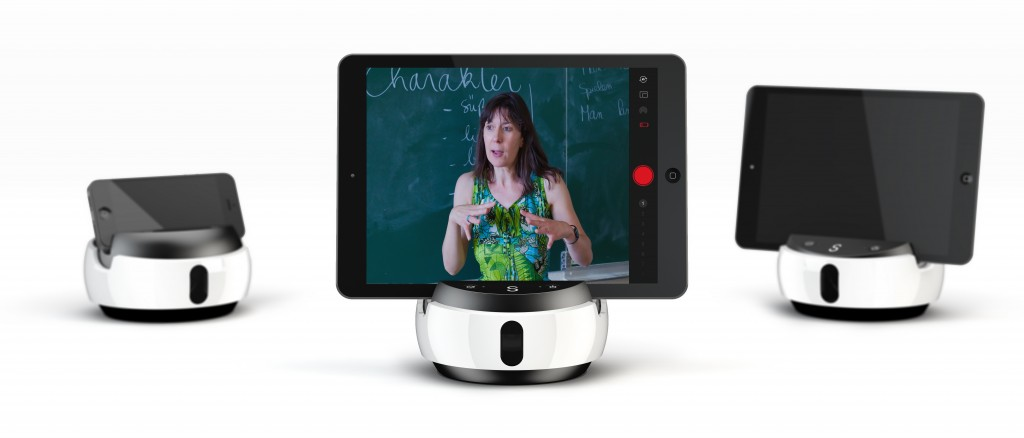Flip the Class to Bring Kids In
‘Flipping the classroom’ once meant a big mess and furniture on the ceiling, but now it refers to shifting the learning process to bring students into the delivery of the lesson, as an author, contributor and curator.
Access to technology – in the classroom, and for the students at home – is the only way to turn this ‘interesting idea’ into a reality.
This is when it is important to remember that iPads and tablets, as well as mobile phones and iPods, are not just information viewing devices, but information capturing devices too.
There are so many opportunities for using a tablet as a camera, or even a digital camera, in the classroom to help both students and teachers to get more out of their day.
Record lessons for class blog
When a teacher captures a lesson on video, they can re-use the information in class as well as make it available on demand, such as on a class blog. Can’t quite recall how we did long division last week? Check it out on the blog! This helps kids who have been absent (either physically or mentally!) when a lesson was conducted avoid the embarrassment that comes from raising a hand in class yet again, helping them to catch up and teaches them self-sufficiency.
Record teacher performance for self improvement
Getting an objective view on your own presentation skills is hard, so recording your own performance can help teachers learn from themselves. For a teacher seeking to improve their skills, recording the performance and replaying it can help them assess what works and what doesn’t.
Record your high performing teachers for staff development
Teachers learn to be teachers, and seeing an esteemed colleague in action is one of the best ways to learn. But how do you do that without the exemplar teacher being affected by the presence of their peers, or changing the class dynamic, and doubling up staff costs for the session? By enabling an experienced teacher to record their performance, the school can then use the recording to teach emerging teachers on tone, handling student enquiries or whatever else is happening in the classroom. This saves staff learning time that would otherwise be spent observing expert teachers, possibly distracting students too, while enabling them to learn outside of class time.
Record student presentation for personal development
Similarly, helping children to get a clear view of their own presentation skills can help them boost their self esteem while learning what they would like to change. Recording their work to view at home can help them boost their own skills in privacy so they return to the next opportunity better prepared and more confident.
Record student presentation for marking
It’s hard to remember all the details when you are marking the 16th student presentation of the day. Recording the presentations while watching them give the teacher an important memory aid and help ALL aspects of a child’s performance to be considered in marking.
Share our classroom with a ‘sister class’ across the city, country or the world
Cultural sharing is so important in a child’s whole of life education, and more schools are incorporating ‘sister class’ experiences in their lessons. Whether it be with a school in another community in the same city or across the country, or overseas, sharing on a peer basis can teach tolerance and inclusiveness. Using Skype, Google Hangouts or other internet based visual communication platforms makes this possible and inexpensive. With a portable camera, this exchange can be done on the sport field, in the community garden – or anywhere.
But how to do it? Tips to make it work in your school
- Everyone feels a little camera shy. Keep the recording process unobtrusive, so it captures the moment but doesn’t dictate it.
- Make it fun. Encourage some camera play so that staff and students can get better at the process of creating content and then recording it. Practice will help ease self-consciousness and accepting ‘mistakes’ will help build resilience – perhaps a class ‘out takes reel’ of funny moments caught on camera can relax the urge for TV perfectionism.
- Use familiar tools. iPads, tablets, digital cameras are great recording devices that staff and children are used to handling. Add to these with a recording solution such as Swivl Personal Cameraman, which holds your iPad or camera as the recording device then tracks the presenter’s movements so that the presentation is always in the frame, and the voice is clearly recorded.
- Build a library of lesson content over time, relevant to stages or classes, which can be passed on year to year. To do this, make the recordings easily accessible. Upload videos to a school blog, or store it with descriptive file names in a common drive accessible by staff. If you are using a Swivl, use the online content storage service called Swivl Cloud that works as an app on iPad or Android device. It can edit the videos to add in slides, which may add written detail being discussed by the presenter. Then you can upload the content to a password protected account which enables you to decide who can view what.
Pia Argiratos is a director of Powered Life www.poweredlife.com.au, which specialises in helping schools maximise their investment in mobile technology by making the right choices in managing iPads, tablets, laptops and more. They find clever products that add value to schools and businesses, to get better learning outcomes but also reduce the costs of owning and managing a fleet of devices. They love Swivl for what it can add to teaching, and they have a limited time special Swivl offer for readers here. <link to: http://www.poweredlife.com.au/swivl-personal-cameraman-special.html >
You must be logged in to post a comment.


There are no comments
Add yours